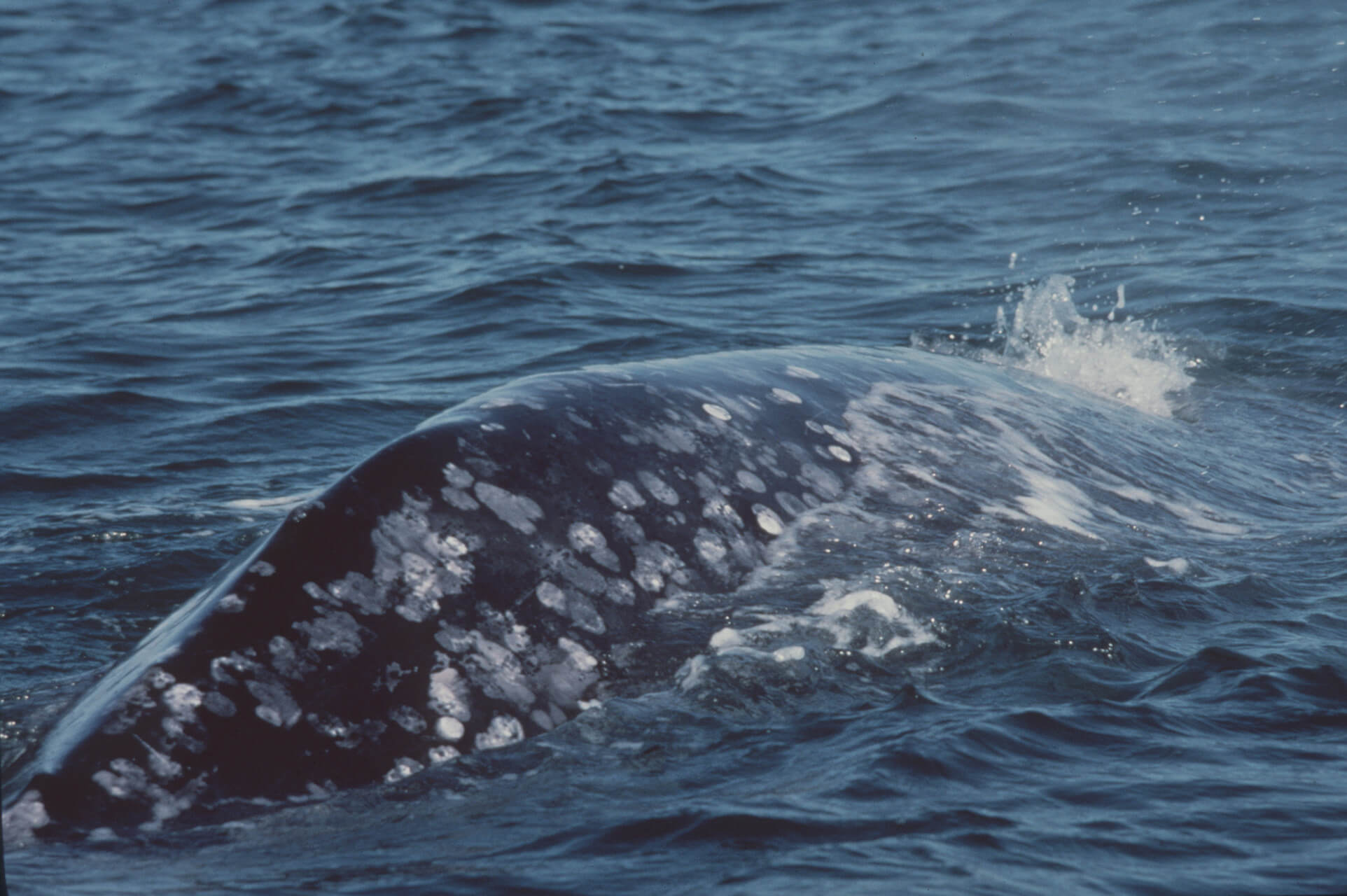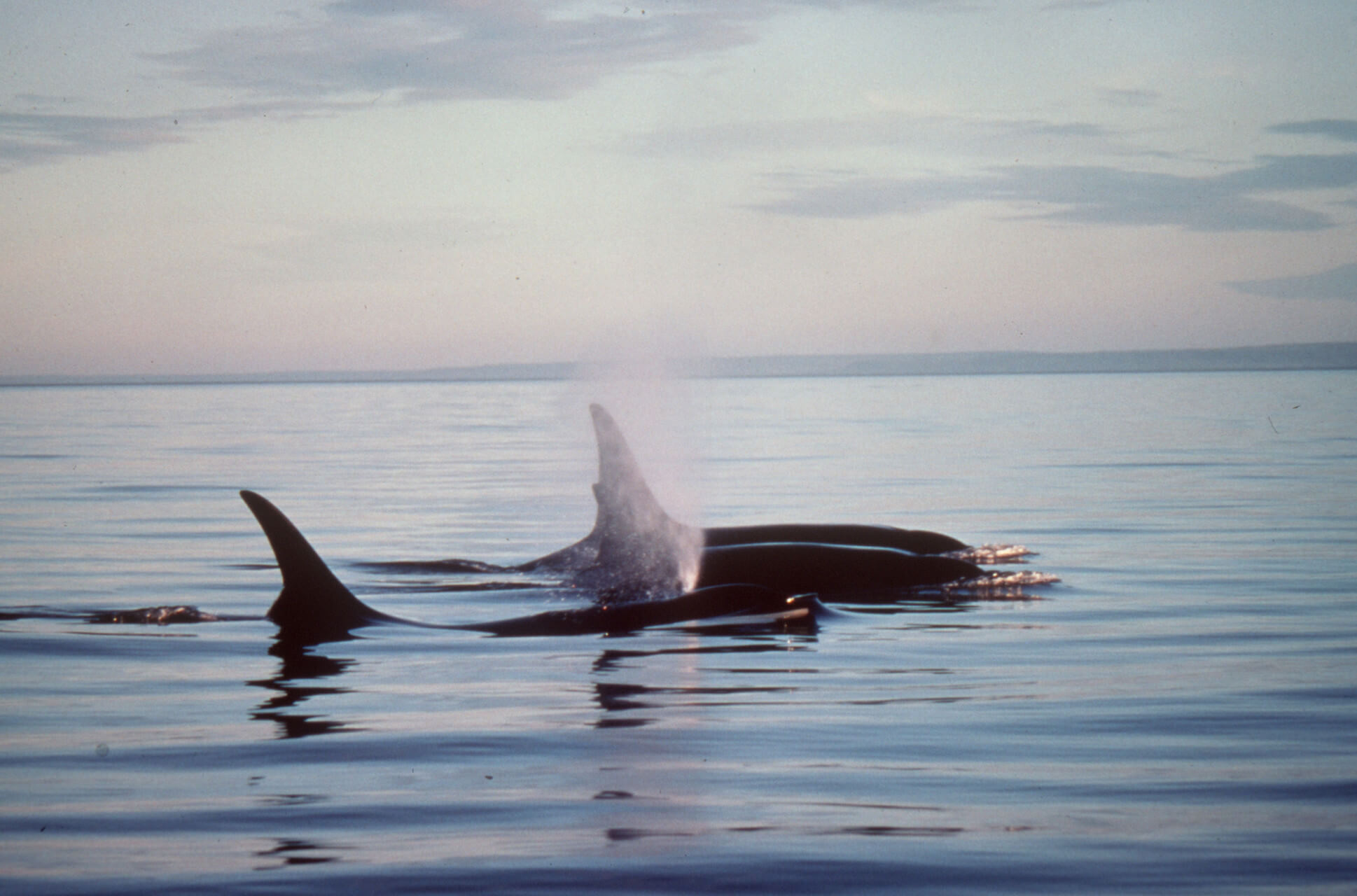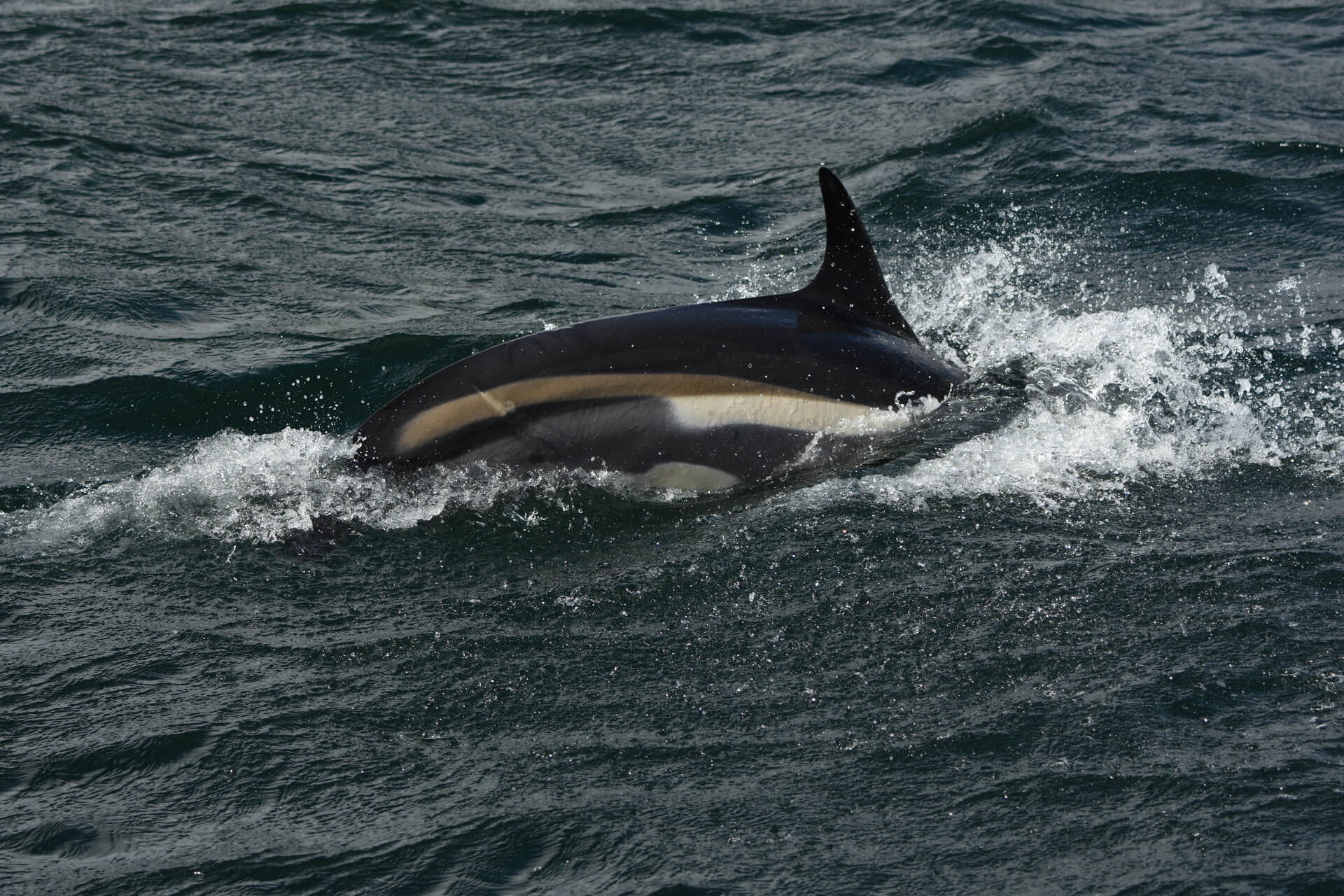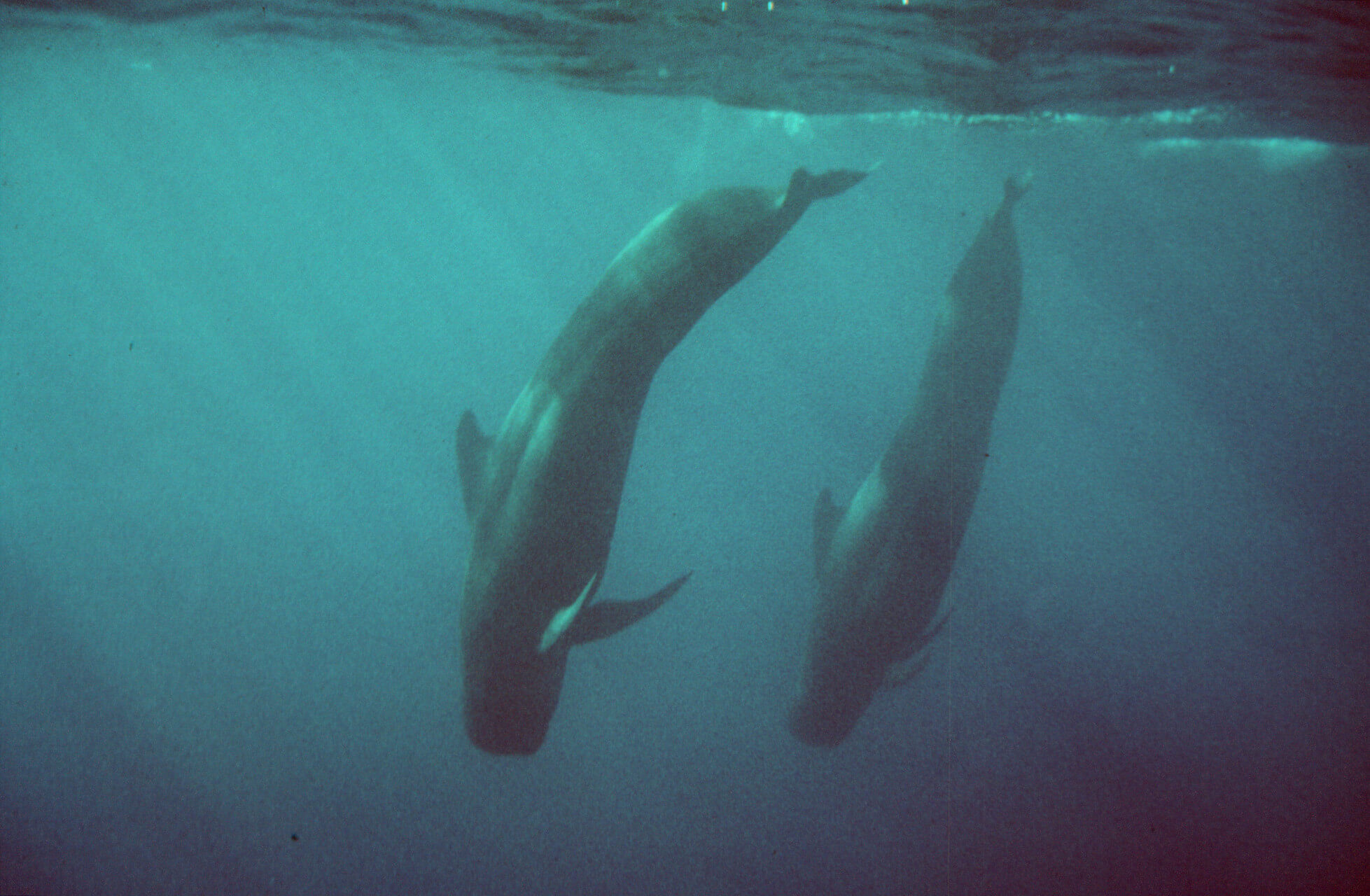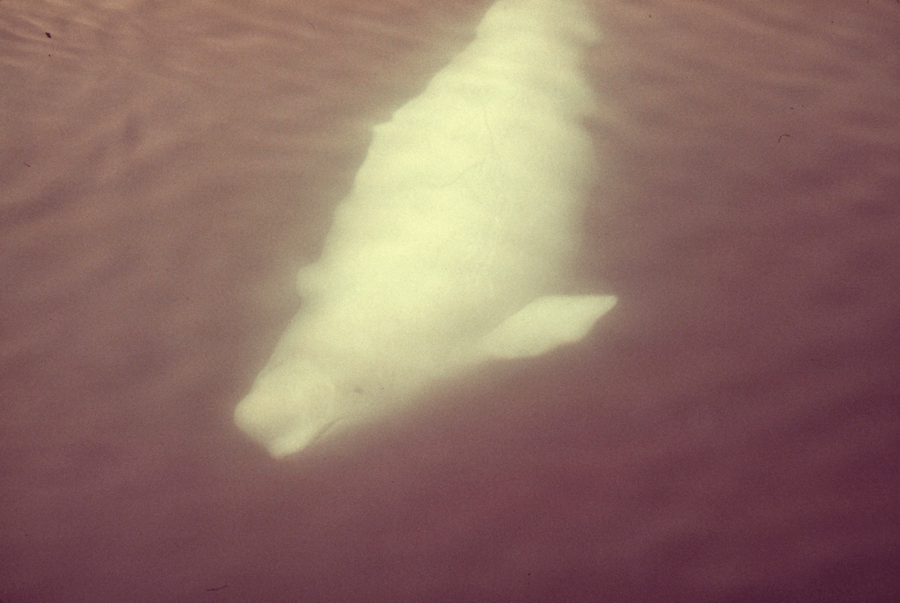Scanning the vast, nutrient-rich waters of the St. Lawrence, any keen-eyed observer may ask a very simple but essential question for identifying the whale that is about to take a deep breath before their eyes. Why do some cetaceans have dorsal fins and others don’t?
In reality, the reason for the presence or absence of a dorsal fin in cetaceans is not immediately obvious, like the white back of a beluga against the dark waters of the Laurentian Estuary. And, although a comprehensive answer depends on multiple evolutionary and current factors, a few explanations can nevertheless be offered. From adaptations to icy environments to thermoregulation issues, from behaviour to social pressures, not to mention the trade-off between speed and manoeuvrability, the characteristics of dorsal fins are determined by a number of factors.
Sexual dimorphism and ice
While some cetaceans have huge dorsals relative to their body size, others have smaller ones, and some species lack them altogether. Thus, the diversity of these fins is a continuum that ranges from imposing to non-existent.
In the killer whale, the size of the dorsal is pushed to the extreme. This species sports a larger dorsal fin than any other cetacean and its size varies according to the sex of the individual. Males feature much taller dorsals than females. This difference has yet to be fully explained, but could be attributable to females’ sexual preferences or other social or ecological pressures.
In the narwhal, the dorsal fin is completely absent, a characteristic that betrays the species’ arctic habitat. Arctic water bodies are often covered with pack ice or ice floes under which it is easier to navigate without a dorsal fin.
Speed and manoeuvrability
In the world of cetacean dorsals, the presence of this fin represents an important compromise between speed and manoeuvrability.
Species that have a large dorsal fin enjoy enhanced stability in the water, which allows them to attain greater swimming speeds but limits their ability to make sharp turns. Offshore dolphin species such as the Atlantic white-sided dolphin are a good example of such anatomy. These cetaceans can reach impressive speeds, which is useful when foraging for fish. Additionally, their strategy of hunting in groups or occasionally in the presence of other cetaceans can allow them to compensate for their poorer ability to manoeuvre.
On the other hand, species with a small dorsal fin or none at all have less stability and, consequently, reduced ability to reach high speeds. This characteristic is offset by greater agility, however. A characteristic better suited to the lifestyle of cetaceans that inhabit more difficult-to-navigate environments such as rivers, estuaries or coastal waters. In river dolphins such as the Amazon river dolphin, manoeuvrability is key for (mostly solitary) foraging through narrow river inlets, underwater obstacles, or even forests in flooded riparian areas.
Body temperature and cold-water environments
In cetaceans, the dorsal fin may also represent an additional tool in the regulation of body temperature. Using a countercurrent heat exchange system, a species with a dorsal fin can regulate the temperature of blood flowing through the arteries of this fat-free fin. This allows the animal to eliminate (when the blood is warmer) or conserve (when it is cooler) heat according to the needs of the moment.
The pilot whale is a long-finned species that feeds on squid and fish. To do so, it regularly engages in fast-paced, active hunting. It is important for it to be able to reduce its body temperature in order to avoid overheating. Additionally, this species is found in temperate to subpolar waters, meaning it is exposed to waters of quite variable temperature. Here again, the dorsal fin can prove to be an important thermoregulation tool.
The Pacific grey whale is another species that, much like the pilot whale, is found between temperate and cold waters. It does not have a dorsal fin, however. In this case, the thermoregulatory capacities of this fin are probably not as developed as those of the pilot whale due to the fact that its feeding technique (sucking up marine sediment) is much less active. Furthermore, it appears that contact between cold water and the inside of its enormous oral cavity offers it another solution to regulate its body temperature when foraging.
The Arctic and the St. Lawrence
The beluga has a dorsal ridge that, much like the previously-discussed cetaceans, is very useful. In this cold-water species, heat loss to the environment is a greater issue than it is in pilot whales. The absence of a dorsal fin therefore allows it to minimize such heat loss. A dorsal fin would both reduce its ability to navigate through the ice floes and, unlike the dorsal ridge, prevent it from breaking through the ice without injury. In addition, during the beluga’s summer feeding period, which often takes place along the coasts or in the estuary, the absence of a dorsal ridge and a mobile head afford the species greater manoeuvrability, which facilitates its frenetic hunting forays.
Learn more
- (1997) Fish, F.E. Biological designs for enhanced maneuverability: Analysis of marine mammal performance (United States). Tenth International Symposium on Unmanned Untethered Submersible Technology: Special Session on Bio-Engineering Research to Autonomous Underwater Vehicles: 109-134.
- (1999) Noren, D.P., T.M. Williams, P. Berry and E. Butler. Thermoregulation during swimming in bottlenose dolphins, Tursiops truncatus (Bahamas). Journal of Comparative Physiology B 169: 93-99.
- (2007) Werth, A.J. Adaptations of the Cetacean Hyolingual Apparatus for Aquatic Feeding and Thermoregulation (United States). The Anatomical Record 290: 546-568.
- (2015) Webber, M.A., T.A. Jefferson and R. Pitman. Marine Mammals of the World: A comprehensive Guide to their Identification (United States).
- (2018) Mesnick, S. and K. Ralls. Sexual dimorphism (United States). Encyclopedia of Marine Mammals 3: 848-853.


